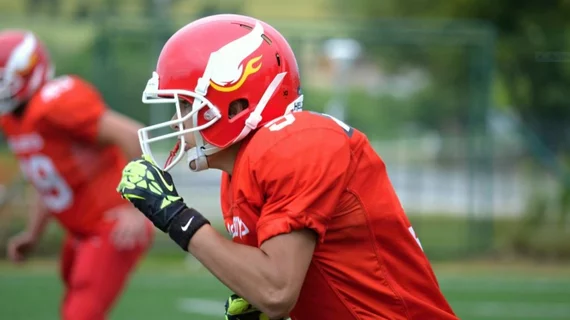Cardiac imaging helps ID heart damage in athletes who have recovered from COVID-19
After athletes recover from COVID-19, when can they get back to their regular schedules? Is it different if they never even experienced symptoms? These remain difficult questions to answer, but according to a new analysis in JAMA Cardiology, cardiac MR (CMR) imaging is an important tool that can help guide clinicians when making such decisions.
“Recent studies have raised concerns of myocardial inflammation after recovery from COVID-19, even in asymptomatic or mildly symptomatic patients,” wrote lead author Saurabh Rajpal, MBBS, MD, of Ohio State University in Columbus, and colleagues. “Our objective was to investigate the use of CMR imaging in competitive athletes recovered from COVID-19 to detect myocardial inflammation that would identify high-risk athletes for return to competitive play.”
The researchers performed CMR imaging, including late gadolinium enhancement (LGE), on 26 college athletes who had tested positive for COVID-19 from June to August 2020. All examinations occurred after the necessary quarantine period, which ranged from 11 to 53 days. Electrocardiograms and transthoracic echocardiograms were also performed on each athlete.
Sports represented by the athletes included football, soccer, lacrosse, basketball and track. None of the study participants were hospitalized as a result of their COVID-19 diagnosis, though 12 reported “mild symptoms.”
Overall, four athletes—all males—had CMR findings “consistent with myocarditis.” Pericardial effusion was present in two athletes. Also, 12 athletes had LGE, and eight of those individuals had LGE without concomitant T2 elevation.
The authors noted that an expert consensus article on resuming exercise after recovering from COVID-19 was published in May, also in JAMA Cardiology. That guidance recommended that, if athletes are asymptomatic, they can get back to competitive sports after taking a two-week break. If they experienced mild symptoms, on the other hand, the guidance recommended the individual first undergo both an electrocardiogram and a transthoracic echocardiogram—with no mention of CMR imaging.
“Emerging knowledge and CMR observations question this recommendation,” Rajpal et al. wrote. “Cardiac magnetic resonance imaging evidence of myocardial inflammation has been associated with poor outcomes, including myocardial dysfunction and mortality.”
Overall, the researchers concluded, “long-term follow-up and large studies including control populations” are still needed, but “CMR may provide an excellent risk-stratification assessment for myocarditis in athletes who have recovered from COVID-19 to guide safe competitive sports participation.”

